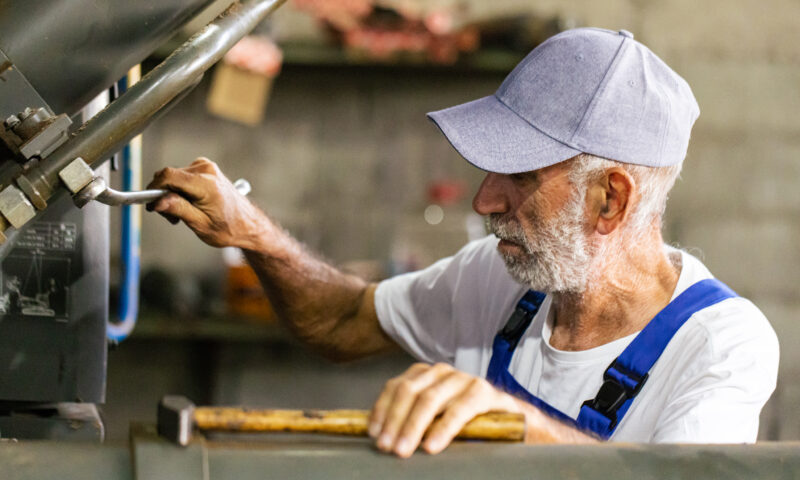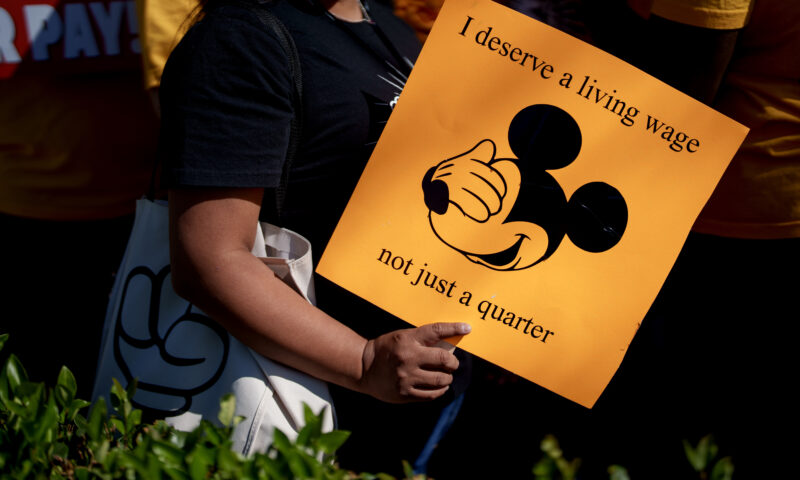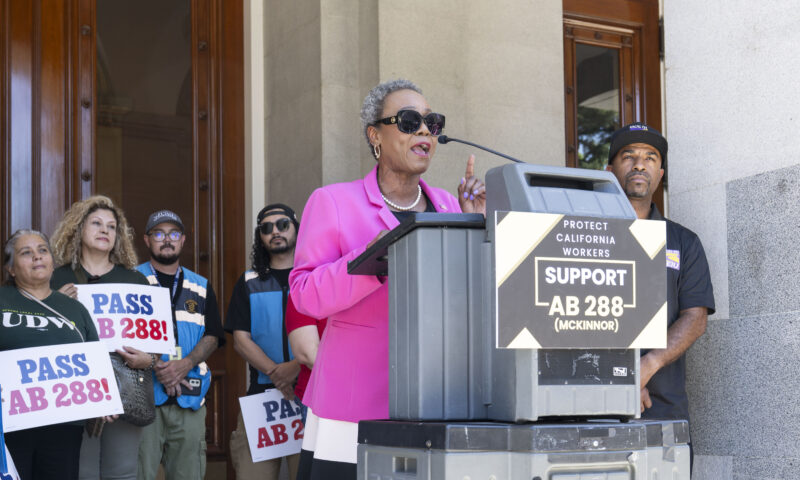Culture & Media
'Manifest: Justice' Art Show Explores Inequality and Reform

The power of art to effect fundamental social change will be on display in Los Angeles this week as a major 10-day “pop-up” exhibit of visual art and accompanying performances, and workshops opens Friday at a former movie theater in the city’s Baldwin Hills neighborhood.
Called Manifest: Justice, the event will showcase over 250 works from more than 150 artists, along with 30 community events that focus on race and criminal justice reform, inequality, healthy communities and immigration reform. It is being produced with support from the California Endowment and Amnesty International.
Drawn from across the country, the list of participants includes such marquee artist-activists as the godfather of guerilla poster caricaturists, Robbie Conal, and Obama ‘HOPE’ agit-provocateur Shepard Fairey, as well as a host of up-and-coming street muralists and wheatpaste artists, inducling the likes of Tatyana Fazlalizadeh, Favianna Rodriguez and Jesse Hazelip. Also on hand will be big-league gallerists such as collagist-photographer Lyle Ashton Harris and painter-sculptor Eric Fischl.
Other highlights include solo-performer Roger Guenveur Smith, who will be reprising Rodney King, his acclaimed commemoration of the black construction worker whose 1991 beating at the hands of white police officers culminated in the Los Angeles riots the following year; appearances by Sybrina Fulton, the mother of Trayvon Martin, who’ll be interviewed by California Endowment president Robert K. Ross; and a staging of Power: Mouths of the Occupied, artist and #BlackLivesMatters originator Patrisse Cullors’ multimedia evening of short monologues by black students based on their personal experiences with state violence.
The show is the brainchild of Yosi Sergant, who may be best known as the promoter behind Fairey’s iconic ‘HOPE’ poster created for Barack Obama’s 2008 presidential campaign.
According to programming director Wyatt Closs, who is is a veteran Los Angeles labor organizer, the roots of Manifest: Justice go back to Sergant and Fairey’s Manifest Hope gallery that was installed at the 2008 Democratic National Convention in Denver, as well as Manifest Equality, a 2010 pop-up exhibit in Hollywood focused on LGBT rights organized as a response to the passage of California’s gay-marriage ban, Proposition 8.
Manifest: Justice, Closs says, will be both broader and more ambitious in scope by focusing on criminal justice reform and race, economic inequality and its disproportionate impact on immigrants and communities of color, and by raising questions about what it means to have opportunity and equality in America, and what is keeping that from happening?
“The idea [really] started from the influence of several different events from the last year-and-half to two years,” Closs told Capital & Main, “from all of the various assaults with respect to young black men, whether it was the case of Trayvon Martin to Ferguson to Eric Garner to, you know, Ezell Ford here in Los Angeles, which brought into question a number of issues about criminal justice reform and race.”
Unlike previous Manifest shows, Closs explained that the Justice edition will use the art as the centerpiece to a wider forum for “discussion and provocation.”
“So even if you came here because you were interested in, let’s say, immigration rights issues,” he said, “we hope that you leave making the connection between that and what’s happening with movements like Black Lives Matter, or the connection with the Fight for $15.”
Closs also sees Manifest: Justice as a showcase for a kind of cultural organizing that he believes has become essential to engaging younger people and marginalized communities in political campaigns.
New York-based wheatpaste muralist Jesse Hazelip may be typical of the new generation of artist-activist represented at Manifest: Justice. Hazelip, who is contributing several pieces from an ongoing series on mass incarceration and the state of the prison-industrial complex, grew up in Santa Barbara and began as a traditional tagger and freeway graffiti artist before graduating to more politically articulate and less destructive work. Those outlaw origins continue to imbue his work with a credibility that is largely absent in studio art.
“It’s kind of like the allure of the vandal and the street artist,” Hazelip agreed. “It’s like, ‘Oh, you’re a cowboy.’ And so that’s another tool to bring people into the conversation. I make sure that everything I do is very well thought out, and I’m really trying to talk about issues that are important to all of us. Everything I do is about human rights. And I think it’s very important to bring people in through whatever platform I can.”
Closs’ ulterior hope for Manifest: Justice is that it will convince community and labor organizers to harness that kind of power.
“It kind of shows folks what’s possible,” he explained. “It’s happening year-round, but increasingly, I hope, it’s something that the progressive community and certainly the labor community is embracing more and not just using as window dressing, but actually seeing it as a viable part of their strategy — that it’s on the organizer’s checklist of things that we need in order to have a successful campaign.”
Manifest: Justice, runs May 1-10 at 3741 S. La Brea Ave., Los Angeles.

-

 Latest NewsSeptember 24, 2025
Latest NewsSeptember 24, 2025Too Old to Keep Working, Not Enough Money to Stop
-

 Latest NewsOctober 14, 2025
Latest NewsOctober 14, 2025People in ICE Custody Face Invasive Strip Searches After Visits With Loved Ones
-

 The SlickSeptember 22, 2025
The SlickSeptember 22, 2025New Mexico Governor Puts Finger on Scale in Oilfield Wastewater Vote
-

 Column - State of InequalitySeptember 18, 2025
Column - State of InequalitySeptember 18, 2025California Moves to Curb Ultraprocessed Foods in School Cafeterias
-

 Column - State of InequalitySeptember 25, 2025
Column - State of InequalitySeptember 25, 2025When Workers Unite, Even Disney Has to Listen
-

 Latest NewsSeptember 23, 2025
Latest NewsSeptember 23, 2025ICE Is Transferring People in Its Custody Away From Family, Lawyers
-

 Column - State of InequalityOctober 9, 2025
Column - State of InequalityOctober 9, 2025California Joins New York in Trying to Fill a Void on Worker Protections
-

 Latest NewsSeptember 26, 2025
Latest NewsSeptember 26, 2025Assault on Accessibility Initiatives Hits Early Career Scientists Hard

